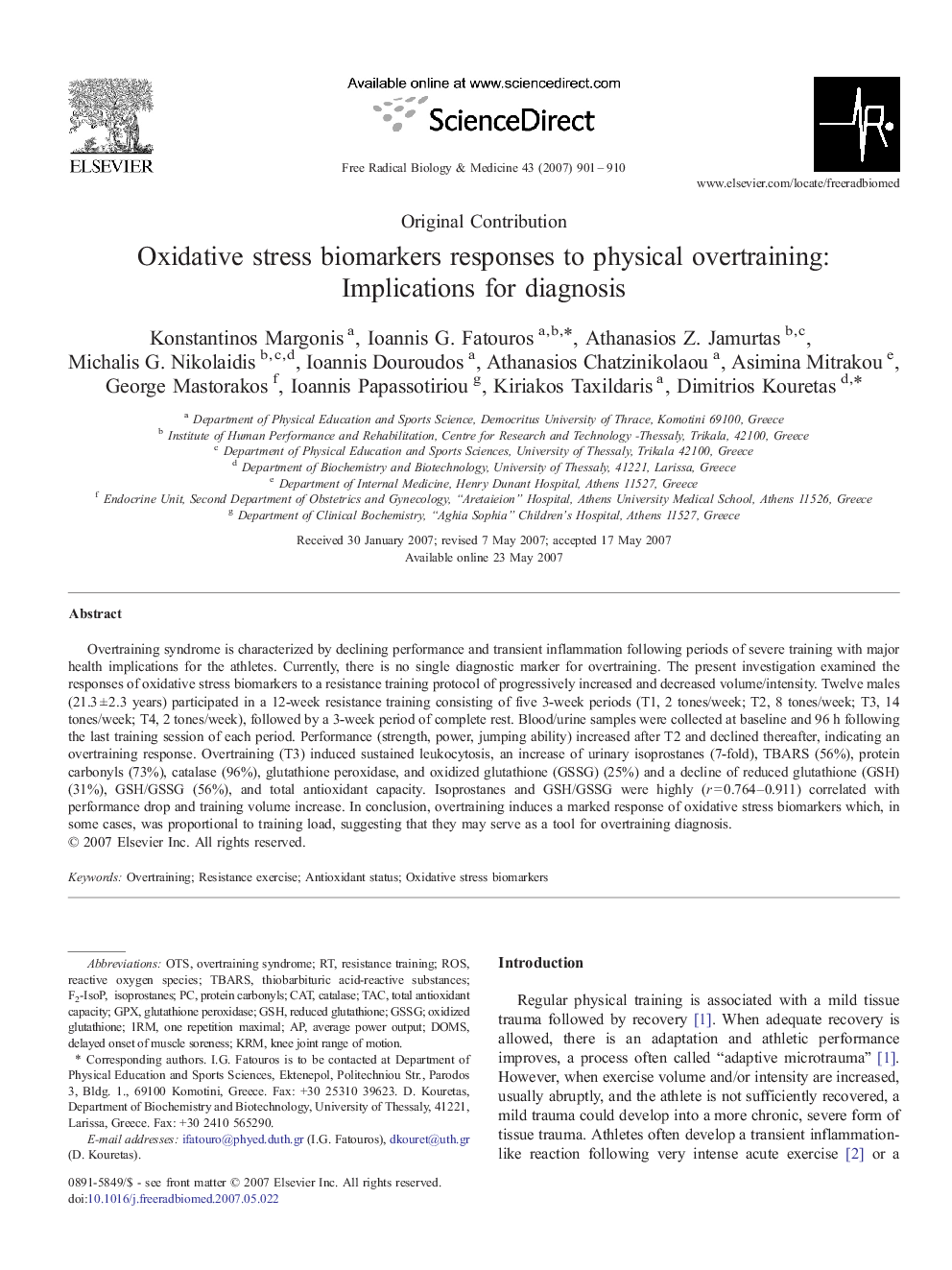| Article ID | Journal | Published Year | Pages | File Type |
|---|---|---|---|---|
| 1911349 | Free Radical Biology and Medicine | 2007 | 10 Pages |
Overtraining syndrome is characterized by declining performance and transient inflammation following periods of severe training with major health implications for the athletes. Currently, there is no single diagnostic marker for overtraining. The present investigation examined the responses of oxidative stress biomarkers to a resistance training protocol of progressively increased and decreased volume/intensity. Twelve males (21.3 ± 2.3 years) participated in a 12-week resistance training consisting of five 3-week periods (T1, 2 tones/week; T2, 8 tones/week; T3, 14 tones/week; T4, 2 tones/week), followed by a 3-week period of complete rest. Blood/urine samples were collected at baseline and 96 h following the last training session of each period. Performance (strength, power, jumping ability) increased after T2 and declined thereafter, indicating an overtraining response. Overtraining (T3) induced sustained leukocytosis, an increase of urinary isoprostanes (7-fold), TBARS (56%), protein carbonyls (73%), catalase (96%), glutathione peroxidase, and oxidized glutathione (GSSG) (25%) and a decline of reduced glutathione (GSH) (31%), GSH/GSSG (56%), and total antioxidant capacity. Isoprostanes and GSH/GSSG were highly (r = 0.764–0.911) correlated with performance drop and training volume increase. In conclusion, overtraining induces a marked response of oxidative stress biomarkers which, in some cases, was proportional to training load, suggesting that they may serve as a tool for overtraining diagnosis.
